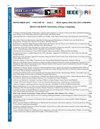印刷电路板缺陷检测:深度卷积自适应目标检测模型的比较分析
IF 1.3
4区 工程技术
Q3 COMPUTER SCIENCE, INFORMATION SYSTEMS
引用次数: 0
摘要
印刷电路板(pcb)是电子工业中的关键部件,确保其完整性对于可靠制造至关重要。基于计算机视觉的自动检测系统虽然高效,但也面临着挑战。在这种情况下,深度学习技术已经成为检测更现代和复杂pcb缺陷的有效解决方案。本文介绍了YOLOv8n、YOLOv11n和RT-DETRv2模型在pcb缺陷识别中的比较研究。实验使用pcb市场数据集进行,其中包括缺孔,老鼠咬伤,开路,短路,马刺和杂散铜缺陷。为了降低计算成本,采用深度卷积块改进了YOLOv8n和YOLOv11n的版本(YOLOv8-DWConv和YOLOv11-DWConv)。分析包括定量比较和定性比较。此外,在具有模糊和光照梯度噪声的挑战性条件下,对模型的鲁棒性进行了评估。结果表明,YOLOv11n实现了最佳的综合性能,而YOLOv11n- dwconv在精度和计算效率之间提供了竞争平衡。本文章由计算机程序翻译,如有差异,请以英文原文为准。
Defect Detection in Printed Circuit Boards: A Comparative Analysis of Object Detection Models with Depthwise Convolution Adaptation
Printed circuit boards (PCBs) are key components in the electronics industry, and ensuring their integrity is essential for reliable manufacturing. Automated inspection systems based on computer vision, although efficient, face challenges. In this scenario, deep learning techniques have become effective solutions for detecting defects in more modern and complex PCBs. This article presents a comparative study between the YOLOv8n, YOLOv11n and RT-DETRv2 models for identifying defects in PCBs. The experiments were conducted using the PKU-Market-PCB dataset, which includes Missing Hole, Mouse Bite, Open Circuit, Short Circuit, Spur and Spurious Copper defects. To reduce the computational cost, modified versions of YOLOv8n and YOLOv11n with Depthwise convolution blocks (YOLOv8-DWConv and YOLOv11-DWConv). The analysis includes quantitative and qualitative comparisons. In addition, the robustness of the models is evaluated under challenging conditions with blur and illumination gradient noise. The results indicate that YOLOv11n achieves the best overall performance, while YOLOv11n-DWConv offers a competitive balance between precision and computational efficiency.
求助全文
通过发布文献求助,成功后即可免费获取论文全文。
去求助
来源期刊

IEEE Latin America Transactions
COMPUTER SCIENCE, INFORMATION SYSTEMS-ENGINEERING, ELECTRICAL & ELECTRONIC
CiteScore
3.50
自引率
7.70%
发文量
192
审稿时长
3-8 weeks
期刊介绍:
IEEE Latin America Transactions (IEEE LATAM) is an interdisciplinary journal focused on the dissemination of original and quality research papers / review articles in Spanish and Portuguese of emerging topics in three main areas: Computing, Electric Energy and Electronics. Some of the sub-areas of the journal are, but not limited to: Automatic control, communications, instrumentation, artificial intelligence, power and industrial electronics, fault diagnosis and detection, transportation electrification, internet of things, electrical machines, circuits and systems, biomedicine and biomedical / haptic applications, secure communications, robotics, sensors and actuators, computer networks, smart grids, among others.
 求助内容:
求助内容: 应助结果提醒方式:
应助结果提醒方式:


